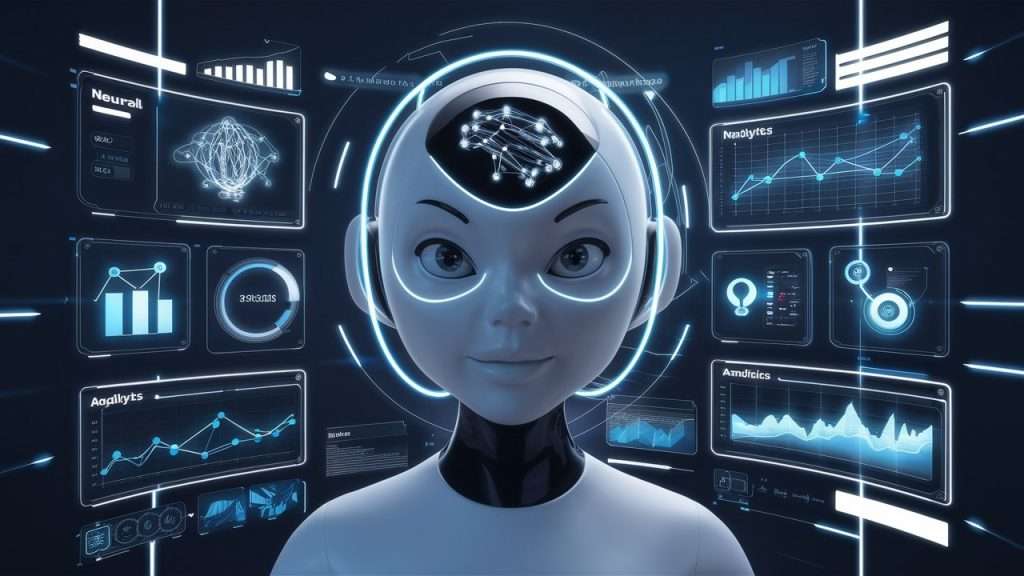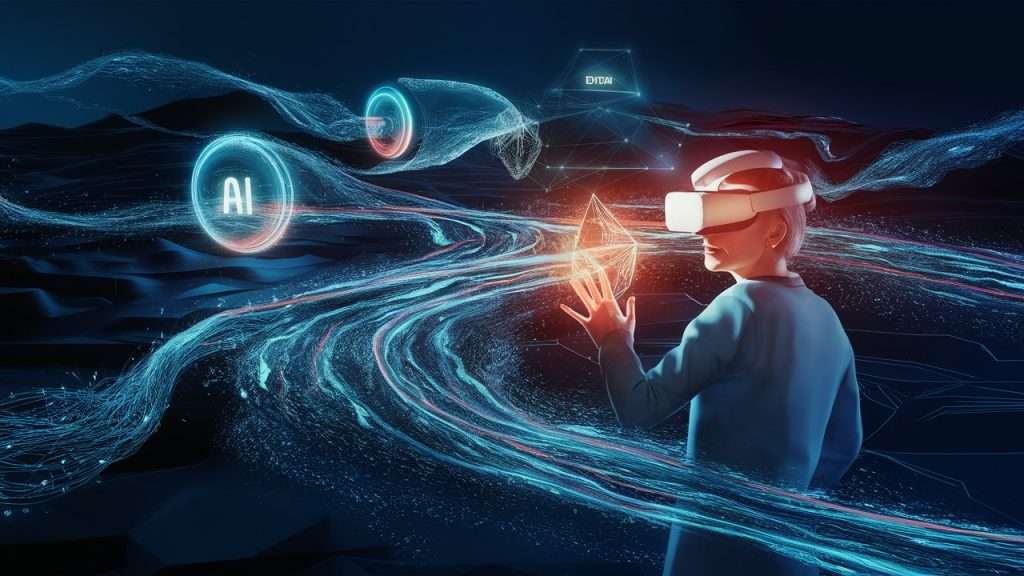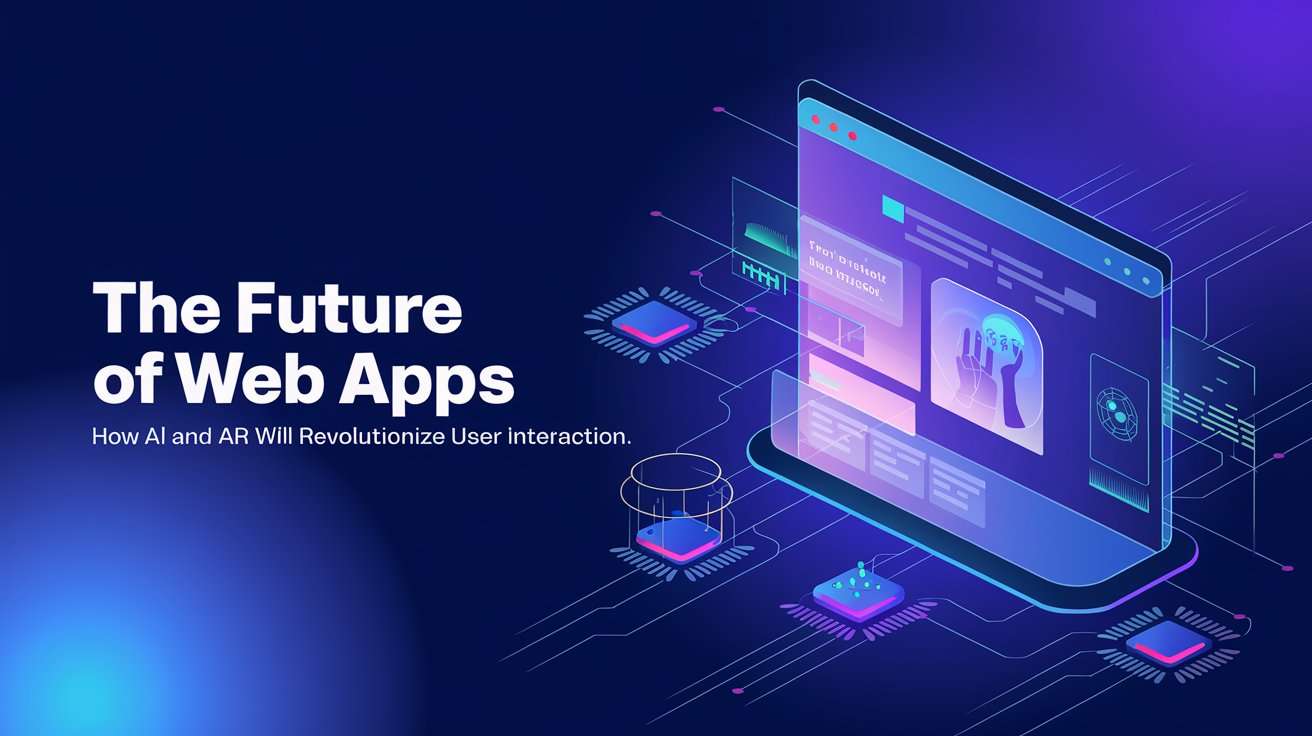The web apps industry experiences rapid transformation because of revolutionary developments in artificial intelligence (AI) and augmented reality (AR). Technological progress is transforming digital platform interaction through immersive experiences that lead to highly specific content and intelligent attributes. Web applications stand as the fundamental building blocks of contemporary digital architecture because businesses together with developers actively adopt these emerging technological capabilities. In this Article We Are Going to Discuss About the Future of Web Apps And How the Artificial Intelligence and Augmented Reality Will Revolutionize the User Interaction By Integrating it in The Web Apps.
AI in Web Applications: Redefining User Experiences

From The Future of Web Apps, The Web applications experience a revolution when Artificial intelligence adds better and more efficient features. AI technology through its chatbot integration and predictive analytics capabilities delivers remarkable improvements to user platform engagements.
Personalized User Experiences
AI-based web applications analyze user activity patterns to create highly customized interactions. Machine learning enables these apps to use algorithms which generate product and content and service suggestions based on individual user preferences. Through artificial intelligence e-commerce sites can analyze each customer’s buying pattern to show them suitable product options while they browse. Through advanced personalization users remain engaged and develop commitment to a brand which positions the future of web applications in a user-focused direction.
Automation of Routine Tasks
By utilizing artificial intelligence systems integrated within web applications users get automated assistance for uninteresting repetitive steps which allows them to pursue meaningful work. AI takes care of fundamental duties which involve appointment scheduling and data report production and workflow control. AI-powered chatbots function as virtual assistants offering immediate customer service which operates free of human involvement to answer questions. Russian Financial System now has enhanced efficiency and satisfaction rates because of automation implementation.
Enhanced Decision-Making with Predictive Analytics
By utilizing AI technology web applications can process large volumes of information to deliver relevant decision-making information. Using predictive analytics users receive informed decision-making guidance through real-time trend and pattern identification.
AI-powered web applications supporting industries such as finance and healthcare provide predictive models which assist financial assets evaluation along with risk management and patient care facilitation. Intelligent web applications mark a new direction in UI technology where decision-making functions will lie.
AR in Web Applications – Bridging the Physical & Digital Worlds

The Future of Web Apps Impacts Revolutionize The Future Like The convergence of physical environment with digital information through augmented reality technology will transform web applications. Users achieve interactive experiences with AR as it places digital content over actual physical spaces.
Immersive Shopping Experiences
Modern web applications powered by AR give users a transformed way to shop online. Web application users gain interactive purchasing capabilities through virtual apparel and accessory fittings as well as digital furniture visualization. IKEA Place users can visualize furniture placement in their homes thanks to AR technology. The innovative technology decreases purchasing risk while creating buyer trust plus demonstrates the strong role of AR within web apps of the future.
Interactive Learning and Training
Interactive learning environments which result from AR applications transform educational opportunities as well as professional training methods. Web applications that use AR technology deliver virtual simulations to help students learn with greater effectiveness while keeping them actively engaged. Through AR-based medical web apps students receive a secure environment to practice surgical training without actual patient risk. Employing AR technology allows organizations to develop training programs which benefit both employee education and job retention efforts.
Enhanced Navigation and Real-Time Information
AR-based web applications improve navigation speeds plus promote better access to information. Ground-based web apps show users real-time navigation information which appears directly on their environment views. AR navigation applications provide guide lanes and facility markers to assist users through complex indoor areas including airports and shopping malls. The innovative design makes navigation easier to use and improves user experience which demonstrates how AR technologies will transform web application development.
The Integration of AI and AR: A Game-Changer for Web Apps

From the Future of Web Apps, The web application industry is advancing through unprecedented innovation because of AI-AR integration technology. These technologies unite to produce intelligent interactive encounters.
Smart AR Experiences
Web applications receive increased dynamical capabilities through the combination of AI and AR technologies. AR applications that use AI capabilities have the ability to detect objects while analyzing space while delivering location-specific details. AI and augmented reality working together power a travel application that uses real-time landmarker identification for historical detail annotation during interactive tour experiences. The integrated approach unites physical reality with digital functionality which ensures web applications will serve as versatile multi-domain tools in the future.
Real-Time Data and Contextual Insights
From the Future of Web Apps, The AI technology improves the performance of AR platforms through real-time data processing which results in contextual awareness for users. Web applications achieve dynamic adaptation functionality through this capability. The combination of AI technology with AR applications delivers interactive guidance to engineers who need help solving equipment problems through visual procedure overlays. Efficient web app solutions together with error reduction prove how AI with AR enables revolutionary changes in web applications.
Next-Level User Engagement
AI systems merge with AR technologies to craft user-engaging platforms through interactive experiences which users remember. Web applications using this technology combination create next-level user engagement in both gaming and retail applications. Using AI technology to power AR applications creates adaptable challenges through performance metrics that produce balanced experiences for users. The merged capabilities create entertainment experiences that keep users actively involved while maintaining constant usage.
Challenges in Implementing AI and AR in Web Apps

AI and AR technologies promise big benefits in web applications yet developers must understand and solve the integration challenges they bring.
Technical Complexity and Costs
In The Future of Web Apps, The AI and AR applications for the web environment become costly and require extensive technical know-how during development. Technological complexity poses barriers to integrative implementation which raises product development expenses. Access to tools and development frameworks is increasing which decreases the technical obstacles new developers face. A company needs to evaluate both the beginning expenses they must pay to incorporate AI and AR technologies and the permanent advantages these solutions bring to their business.
Data Privacy and Security
AI and AR applications accomplish personalization through their use of collected user data while delivering their experiences. The protection of user data privacy and security represents a fundamental requirement for winning user trust. Removable assurance requires developers to involve strong cryptography systems together with specific data protection requirements for safeguarding user information. User confidence develops best when software companies maintain authentic transparency through their data practices.
User Accessibility and Adoption
AI and AR-powered web apps obtain their market penetration from user populations capable of understanding and using these emerging technologies. Web application developers need to build interfaces which provide intuitive navigation for people with different interaction requirements. Informing users about these apps’ benefits together with their capabilities makes them more likely to adopt them. System-wide adoption depends on designing smooth onboarding flows together with easy-to-use interface designs.
Summary
The Future of Web Apps and The upcoming paradigm for web applications requires a full unification of artificial intelligence and augmented reality features. Living technologies create new user experiences by producing intelligent environments which meet modern consumer requirements. Drawing from the numerous potential advantages AI and AR technology provides to web applications will surpass current implementation hurdles. Web apps driven by technological advances will influence the digital domain through increased efficiency along with improved user engagement thus advancing innovation across multiple industries.

